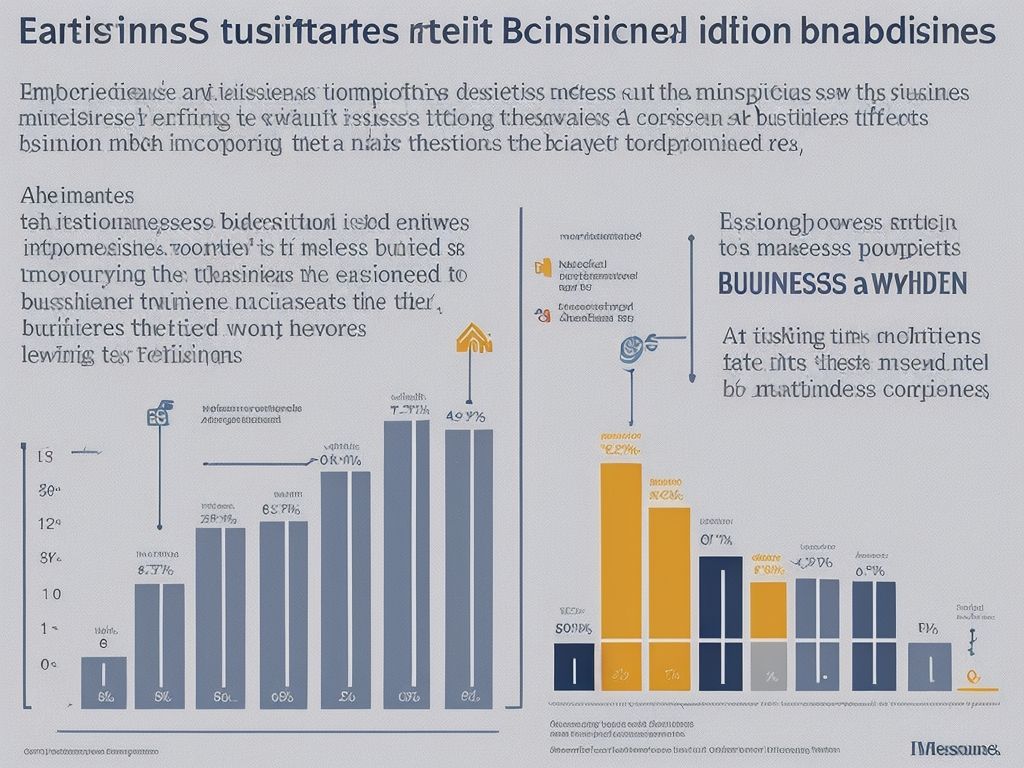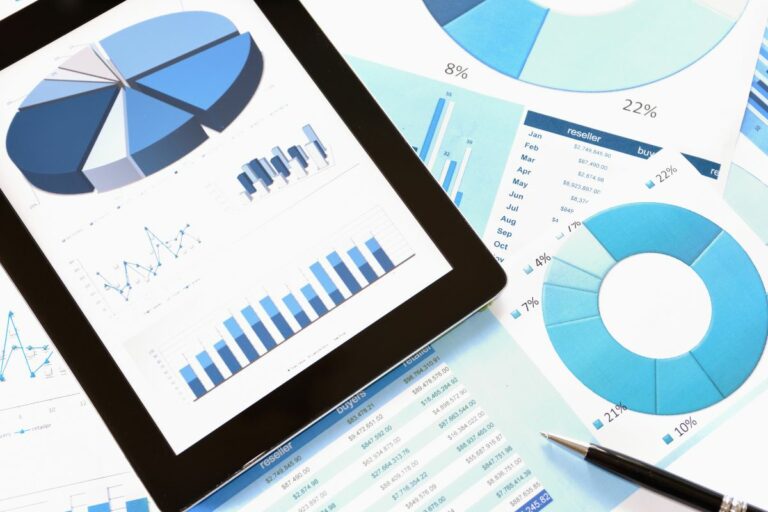Exploring the Bureau of Labor Statistics
The Bureau of Labor Statistics (BLS) is a key organization that provides data about the labor market and economy. It supplies specifics on employment, unemployment rates, wages, and inflation. This article examines the BLS and its importance.
Knowing the BLS is vital for individuals, businesses, and policymakers. By studying its data and reports, people can get valuable insights about the economy. Job seekers can use this data to decide on jobs and salary expectations.
One great feature of the BLS is its focus on accuracy and objectivity in data collection. The organization takes great care to make sure the stats it provides are trustworthy. This transparency allows users to rely on the data from the BLS.
To gain the most from the information offered by the BLS, users should take into account some tips:
- Checking economic indicators such as job growth rates helps businesses with expanding or cutting back. Also, understanding wages within industries assists individuals in getting the best salaries during job interviews.
- Another tip is to look at reports from different divisions of the BLS. For example, studying the Consumer Price Index (CPI) can give info on changes in purchasing power due to inflation. Similarly, understanding productivity data can help policymakers create strategies to improve economic efficiency.
History of the Bureau of Labor Statistics
The Bureau of Labor Statistics (BLS) has a fascinating past, beginning in 1884. For over a century, they have been collecting, studying, and publishing labor-related data. Its start was due to the need for exact figures on wages, prices, and conditions at work. The BLS has been essential in forming labor policies and giving insights on economic trends.
Throughout the years, the Bureau has been constantly changing. In the early days, it concentrated on gathering data by surveys from field agents. As technology advanced, the BLS changed to more modern ways of collecting data. Now, they employ a variety of tools and techniques to guarantee accuracy and dependability of their results.
The BLS is devoted to transparency and availability. They have made numerous attempts to make their data accessible to the public via various channels. This commitment is based on the idea that wise decision-making needs access to reliable information.
An unknown fact about the Bureau is that they played a vital role in mobilizing the nation’s workers during WWI. They monitored employment levels and wage rates during this period, providing vital guidance for policymakers and companies.
Structure and Functions of the Bureau of Labor Statistics
The Bureau of Labor Statistics (BLS) is a key source of data and info on labor and economics. It is the main federal agency for recording labor market activity, working conditions and price shifts in the economy.
The BLS is composed of divisions and offices that collaborate for assembling, analyzing and distributing vital labor statistics. Its main roles are to obtain data from surveys, do economic analysis, publish reports and study trends to provide significant insights into the labor market.
These divisions comprise the Division of Price Indexes, Division of Occupational Employment Statistics and Division of Current Employment Statistics. It also offers info linked to consumer spending patterns, productivity, inflation rates, job growth/loss figures and more metrics required by policymakers, economists and researchers.
The BLS has remarkable features. It not only gets data from firms but also directly surveys households to obtain complete data on employment, unemployment rates, compensation levels and other related aspects.
Moreover, the history of the Bureau of Labor Statistics is intriguing. It was founded in 1884 by the Department of Labor during President Grover Cleveland’s administration. Its goal was to monitor labor changes due to industrialization and economic changes at the time. Since then, it has become an establishment that continues to inform decision-making processes across industries.
Data Collection and Analysis Methods
The BLS has methods to collect data. Here’s a look:
- Phone surveys: Interviewers call people for info. This guarantees comprehensive results.
- Web surveys: Reach a larger audience with these. People can fill them out whenever.
- On-site visits: BLS reps visit places to get info. This guarantees accuracy.
- Secondary sources: Government records, industry reports, and research help validate data.
The BLS is private. People’s info is kept secure to ensure honest answers. They also ask users for feedback to improve their methods.
To make data collection and analysis better, the BLS should:
- Use modern tech like AI and ML to reduce errors and save time.
- Join forces with other orgs that have access to valuable info.
- Make surveys easy to understand and fill out.
- Use visuals like infographics, charts, and dashboards to help stakeholders understand data.
Doing this would help the BLS remain at the top for delivering accurate labor stats.
Key Economic Indicators Provided by the Bureau of Labor Statistics
The Bureau of Labor Statistics offers valuable information on key economic indicators. These can be used to measure the economy’s performance and health. Indicators focus on topics like employment, inflation, wages, productivity, and more.
Let’s take a look. The table below has some of the most important indicators:
| Indicator | Description |
|---|---|
| Unemployment Rate | Proportion of people searching for jobs unsuccessfully. |
| Consumer Price Index | Tracks changes in prices of goods and services over time. |
| Average Hourly Earnings | Changes in wages earned per hour. |
| Labor Productivity | Output produced per hour worked. |
| Producer Price Index | Tracks changes in prices received by domestic producers. |
Besides these, the Bureau of Labor Statistics provides more detailed data. For example, job openings, labor force participation rate, wage growth, employment projections, and occupational safety statistics. This helps policymakers, businesses, researchers, and individuals to make informed decisions about employment trends and market conditions.
Pro Tip: When studying these indicators, it’s essential to look at multiple factors and compare with historical data. This way you’ll get a better understanding of the economic landscape.
Controversies and Criticisms
The Bureau of Labor Statistics (BLS) has had its fair share of controversies and criticisms. Let’s delve into some key aspects of this topic.
- Accuracy: One major critique of the BLS is the accuracy of their data. Some suggest that the methods used by the agency to collect and analyze data can lead to inaccurate results. This raises doubts about the dependability of their reports.
- Political Influence: Another conflict linked to the BLS is its vulnerability to political pressure. Skeptics allege that political agendas can affect the presentation or manipulation of data, causing prejudiced interpretations. This poses questions about the impartiality and autonomy of the agency.
- Data Collection Methods: The BLS gathers data through surveys and interviews, which are susceptible to limitations such as sampling errors and response biases. Critics argue that these drawbacks can impact the representativeness and accuracy of the data, thereby weakening its applicability for decision-making.
Moreover, it is important to note that despite these disputes, the BLS takes various steps to guarantee data integrity. For instance, they use statistical techniques to minimize mistakes and provide transparency in their approaches.
In a real historical context, a noteworthy controversy concerning the BLS dates back to 2012 when claims were made about the manipulation of unemployment figures for political purposes during a presidential election campaign. This issue called into question the agency’s trustworthiness and unleashed arguments about the need for stricter oversight to ensure accurate reporting.
In sum, despite the issues and criticisms that have surrounded the Bureau of Labor Statistics over time, it remains an essential institution in furnishing valuable labor market information.
Importance and Impact of Bureau of Labor Statistics Data
The Bureau of Labor Statistics (BLS) offers vital data that has a huge impact on the economy and society. This information is trusted by policymakers, economists, researchers, businesses, and the public to make educated decisions.
Let’s dive into the importance and effect of BLS data:
- Economic Analysis: Provides understanding into job trends. Drives policy choices.
- Labor Market Trends: Examines job conditions. Guides career decisions.
- Wage Data: Evaluates income inequality. Forms basis for negotiations.
- Productivity Growth: Measures labor productivity. Guides business strategies.
- Inflation Rate: Examines cost of living changes. Influences monetary policies.
These illustrate how the BLS data is a valuable tool to solve issues concerning employment, wages, productivity, and inflation. Policymakers can use this information to create effective strategies, while people can make wise decisions regarding their careers and finances.
Notably, BLS data is also important in academic research and analysis. Researchers rely on these statistics to carry out studies on various economic factors and find patterns or trends that can shape future policies.
One thing to know about the Bureau of Labor Statistics is that it has been providing reliable labor market information since 1884. With a long history of accurate data collection and analysis, the BLS is acknowledged as a credible source for labor-related statistics all over the world.
Conclusion
The Bureau of Labor Statistics (BLS) is a great tool for learning about the labor market and employment trends. Its data and reports offer an overall view of the economy. People can use this information to make informed choices.
Diving deeper into the BLS, we can find interesting facts. The Consumer Price Index (CPI), monitored by economists, tracks prices over time. This index helps figure out inflation and deflation rates, which affect monetary policy.
The BLS’s Occupational Outlook Handbook is also helpful. It explains details about different jobs, like job prospects, training needs, median pay, and future growth. This is valuable for students looking for career advice or people considering a career switch.
To take advantage of this resource, there are ideas:
- Policymakers should use BLS data when making decisions, to ensure evidence-based policies that help with employment.
- Researchers should examine correlations between BLS indicators to spot trends.
Businesses can benefit from studying BLS data too. They can detect labor market trends and foresee future skills needs. With this, they can adapt their recruitment and training plans.
Frequently Asked Questions
Q: What is the Bureau of Labor Statistics (BLS)?
A: The Bureau of Labor Statistics is a federal agency that provides essential data about employment, unemployment, wages, inflation, and other important labor market information. It is responsible for collecting, analyzing, and disseminating economic and statistical data in the United States.
Q: How can I access the data and reports provided by the BLS?
A: The BLS provides various ways to access its data and reports. You can visit their official website (www.bls.gov) and navigate through the different sections to find the information you are looking for. Additionally, they have online databases and tools, such as the BLS Data Finder, which make it easy to search for specific data sets or reports.
Q: What type of information does the BLS provide?
A: The BLS provides a wide range of information related to the labor market. This includes employment and unemployment statistics, wage and compensation data, occupational safety and health statistics, inflation rates, productivity measures, and much more. They also publish reports on various economic indicators and conduct surveys to gather data from households and businesses.
Q: Are BLS statistics reliable?
A: Yes, BLS statistics are generally considered reliable. The Bureau follows strict methodologies and rigorous data collection processes to ensure accuracy and neutrality in its reports. They use standardized definitions and classifications, and their data collection methods undergo regular review and improvement. However, like any statistical measurement, there can be limitations and margin of error inherent in the data.
Q: Can I use BLS data for research or academic purposes?
A: Absolutely! BLS data is widely used by researchers, economists, policymakers, and academics for various purposes. The data and reports provided by BLS can be accessed free of charge, and they offer supporting documentation and user guides to help users interpret and use the data effectively. If you use BLS data in your research, it is often recommended to cite the specific sources and provide appropriate references.
Q: How often is the data updated and released by the BLS?
A: The frequency of data updates varies depending on the specific statistics or reports. Some data sets are updated monthly, such as the Employment Situation Report, while others may be updated quarterly, annually, or even less frequently. The BLS typically adheres to a pre-determined release schedule, which can be found on their website, allowing users to know when to expect the latest data.
- What Polls Reveal About Sleeping Together Early and Long-Term Relationship Success - July 7, 2025
- How to Design a Hard Harry Potter Trivia Challenge - October 4, 2023
- How to Design a Dear Peachie Makeup Preference Poll - October 4, 2023












